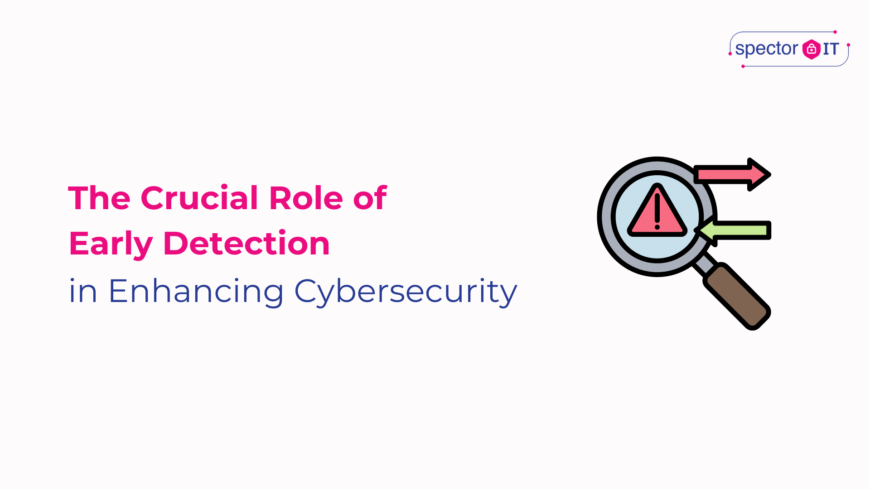
The Crucial Role of Early Detection in Cybersecurity
Cyber threats are evolving rapidly, the importance of early detection in cybersecurity cannot be overstated. A comprehensive cybersecurity strategy is not just about defending against attacks but also about identifying potential threats before they can cause harm.
The National Institute of Standards and Technology (NIST) Cybersecurity Framework (CSF) provides a robust structure for managing cybersecurity risks, which is built around six core functional areas:
- Govern,
- Identify,
- Protect,
- Detect,
- Respond,
- and Recover.
The Focus on Early Detection
Despite the balanced approach of the NIST framework, many organisations, especially those less mature in their cybersecurity practices, tend to focus heavily on Protection and Recovery. This focus is often driven by the cybersecurity and backup industries’ marketing efforts, which emphasise the need for robust malware protection and backup strategies. However, this post aims to highlight the critical, yet often underappreciated, role of early detection in preventing cyber incidents.
According to study results, it can take up to 9 months by average before a security incident is detected. That is precious time in which it would be possible to avert or limit damage.
Why Early Detection Matters
Over the past five years, we’ve seen first-hand the benefits of early detection systems in identifying early warning signs of malicious behaviours in several client networks. These breaches were primarily due to the shift to remote working, targeted phishing emails, and, in some instances, poor identity controls and management. The ability to detect these vulnerabilities early played a pivotal role in mitigating potential damages that could have been far worse.
Here are the key benefits of having a robust early detection system:
Minimising Damage
Early detection allows organisations to identify and address security threats before they escalate into significant breaches. This proactive approach is crucial in minimising the impact of cyber attacks, potentially preventing data loss, financial damage, reputational harm, and legal liabilities. By catching threats early, organisations can significantly reduce the severity of attacks and the costs associated with them.
Cost-Effectiveness
Addressing cybersecurity issues after a breach is often far more expensive than preventing them in the first place. The costs associated with data recovery, regulatory fines, legal expenses, and remediation can be substantial. Investing in early detection not only helps prevent these outcomes but also saves significant resources that would otherwise be spent on damage control.
Preserving Trust and Reputation
A cybersecurity breach can severely damage an organisation’s reputation and erode trust among customers, partners, and stakeholders. Demonstrating a proactive approach to risk management through early detection and prevention can enhance trust and confidence in an organisation’s commitment to security. Maintaining a strong reputation is essential for customer loyalty, attracting new business, and achieving long-term success.
Safeguarding Critical Assets
Early detection systems play a vital role in protecting an organisation’s most critical assets, including intellectual property, financial data, and customer information. By proactively identifying vulnerabilities and threats, organisations can prevent unauthorised access and ensure the confidentiality, integrity, and availability of their valuable assets.
Ensuring Compliance
Many industries face stringent regulatory requirements related to cybersecurity. Early detection helps organisations comply with these regulations, avoiding penalties and legal consequences for non-compliance. Effective security measures and a commitment to staying ahead of emerging threats are crucial for demonstrating compliance and effective risk management.
Implementing Early Detection in Your Organization
Understanding the importance of early detection is the first step; implementing it effectively is the next. For organisations uncertain about how to integrate early detection strategies or those seeking to evaluate their current cybersecurity posture, seeking expert guidance is advisable. A Cybersecurity Gap Analysis, for example, can reveal vulnerabilities in your current setup and provide a roadmap for enhancement.
Conclusion
In conclusion, early detection is a critical component of a comprehensive cybersecurity strategy. It allows organisations to be proactive rather than reactive, dealing with threats before they develop into a full-blown crisis. By investing in early detection, organisations not only enhance their security posture but also ensure the long-term resilience and safety of their digital operations.
For those looking to improve their cybersecurity measures or understand more about implementing early detection solutions, consider reaching out for professional advice.
Book a call today to discuss your cybersecurity strategies and understand how we can provide valuable insights and practical steps to enhance your organisation’s security measures effectively.

